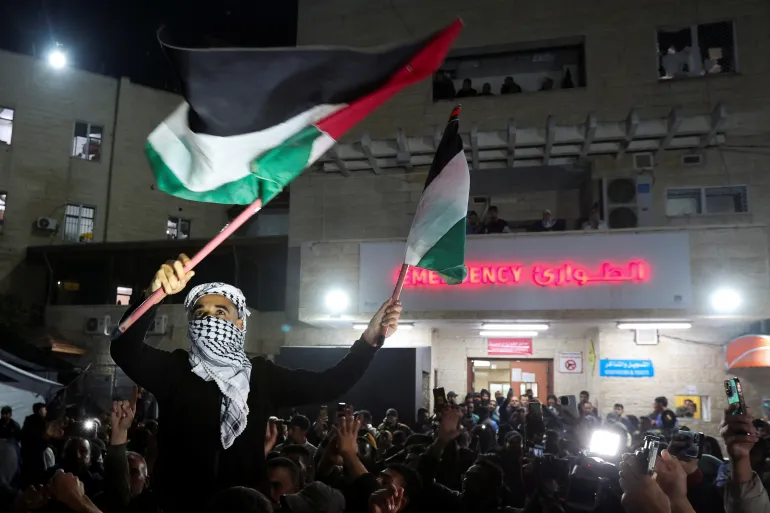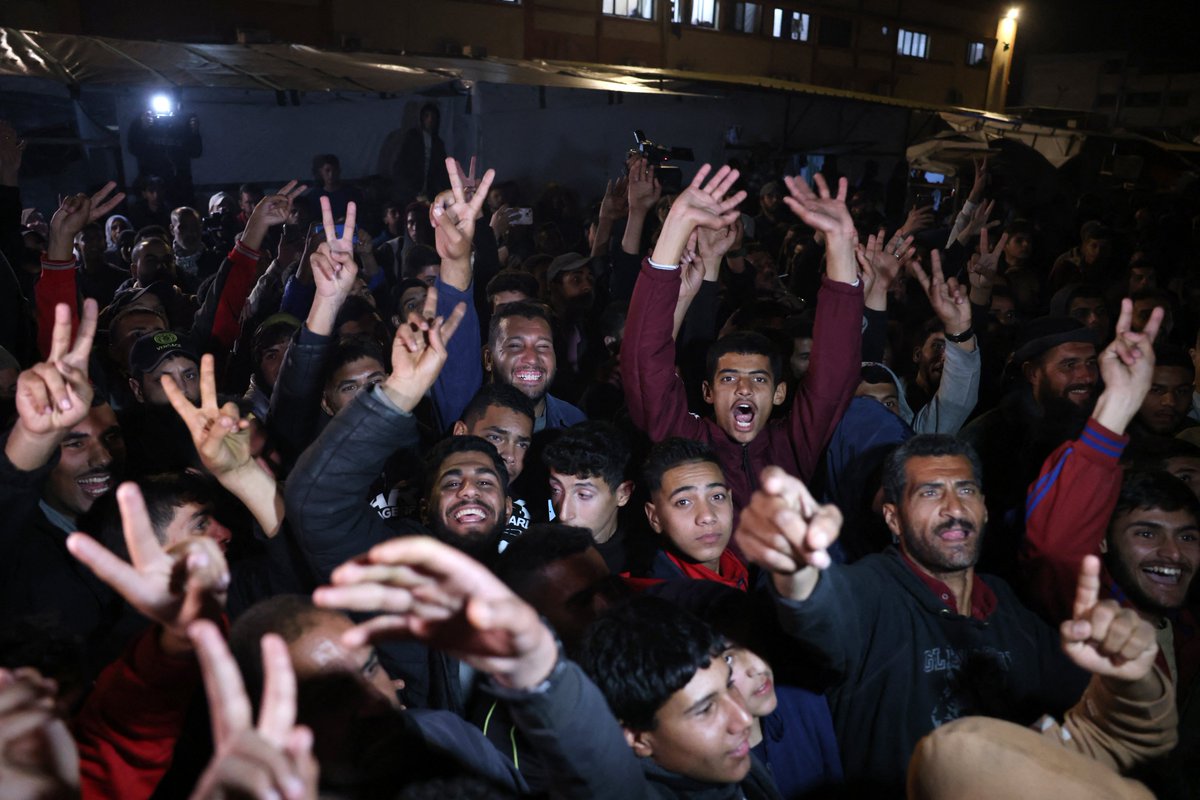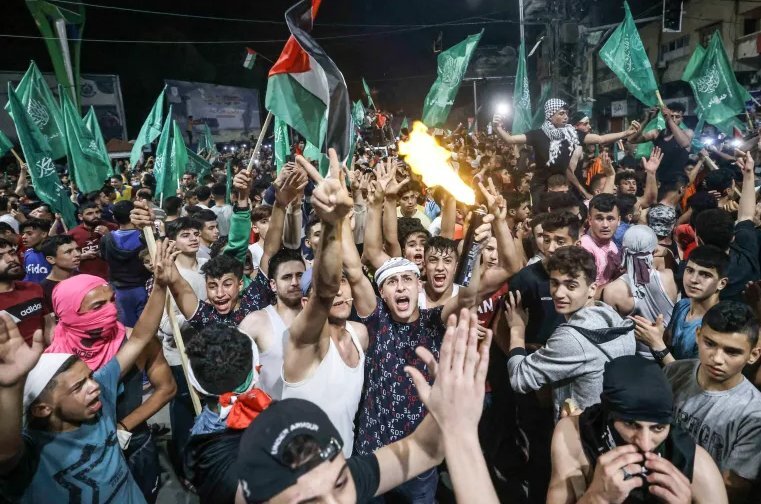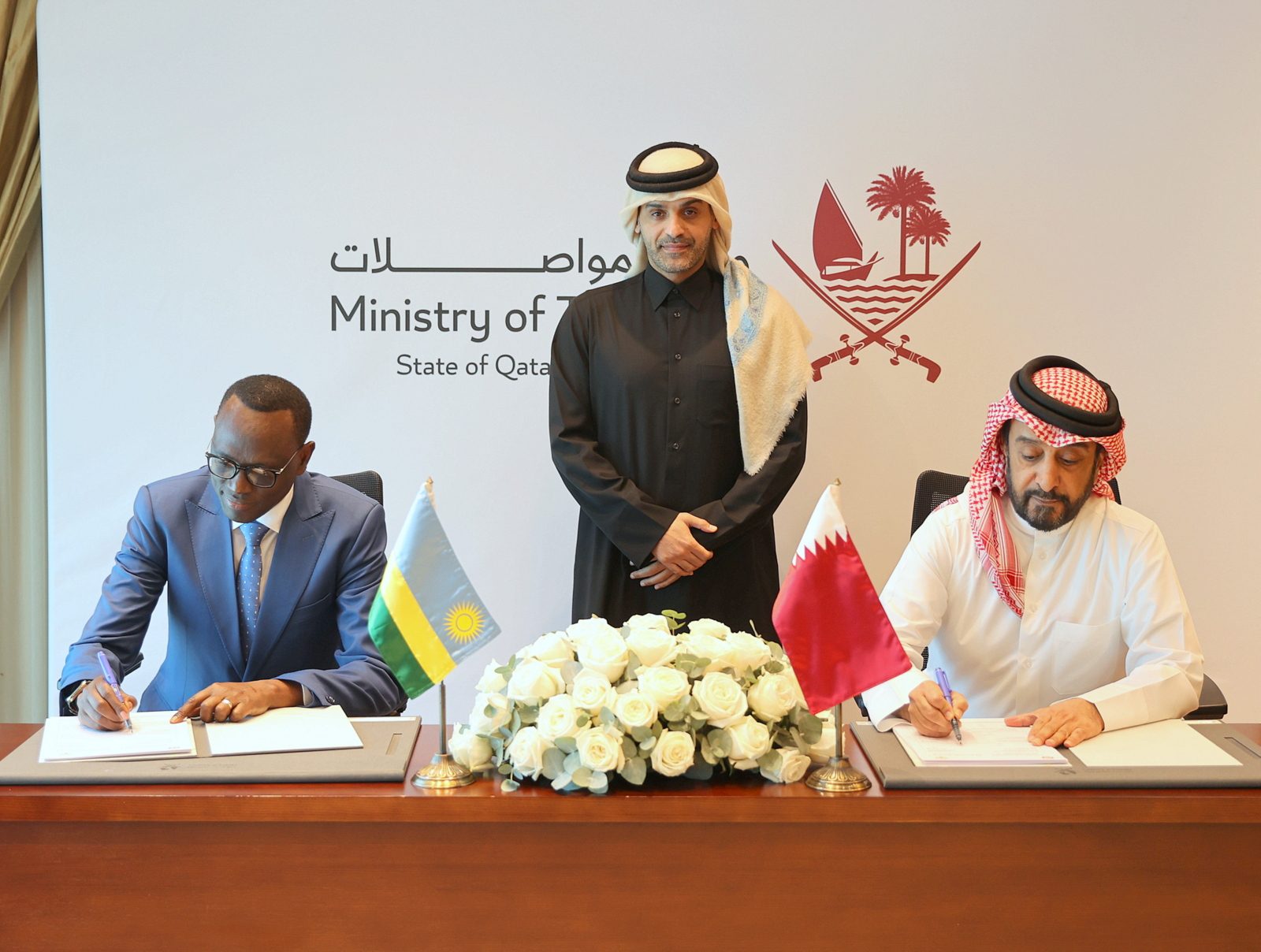A ceasefire deal between Hamas and Israel was announced to end 15 months of war in Gaza, but skepticism remains as Israeli air strikes continue, killing over 80 Palestinians.
A long-awaited ceasefire deal was reached on Wednesday between Hamas and Israel after 15 months of intense genocide that has left the Gaza Strip ravaged and thousands of Palestinians devastated.
The deal, brokered by Qatar, Egypt, and the United States, outlines a phased approach to bring an end to the genocide of Palestinians and promises much-needed humanitarian relief, alongside captives exchange.
However, the road to lasting peace looks somewhat elusive, with ongoing challenges and skepticism surrounding the deal’s full implementation.
Qatar’s Prime Minister and Minister of Foreign Affairs, Sheikh Mohammed bin Abdulrahman Al Thani, announced that the ceasefire will be implemented in three phases.
First Phase – Captives and Prisoners Release
The first phase, set to unfold over six weeks, begins with the release of Israeli captives and the simultaneous release of Palestinian prisoners from Israeli jails.
Hamas is expected to free Israeli captives, including two Americans, while Israel will release Palestinian prisoners.
Additionally, this phase includes measures to allow injured Palestinians to seek medical treatment abroad and the opening of the Rafah border crossing to facilitate humanitarian aid.
Another critical element is the partial withdrawal of Israeli forces eastward, signaling a preliminary step towards de-escalation.
Despite these commitments, doubts persist about Israel’s adherence to the agreement, with civilians in Gaza expressing cautious hope and lingering grief.
At least 80 Palestinians were killed in Israeli air strikes after the deal was announced, Al Jazeera reported.
Second Phase – Military Withdrawal and Civilian Return
Following the initial exchange, the second phase will focus on a broader military withdrawal and the return of displaced Palestinian civilians.
Israeli forces are expected to withdraw completely, including from the strategically significant Philadelphi Corridor along Gaza’s southern border.
Civilians will begin returning to northern Gaza, marking a significant moment for many families who have been displaced for over a year.
This phase also includes further exchanges of captives for prisoners and the creation of buffer zones to prepare for a more sustainable ceasefire.
However, the path forward remains fraught with political tensions and the potential for renewed violence if Israel reneges.
Third Phase – Reconstruction and Future Planning
The final phase aims to address the long-term reconstruction of Gaza and establish plans for its future governance.
It includes the handover of the remains of any deceased captives and the opening of Gaza’s borders to allow free movement of goods and people.
Reconstruction efforts will be implemented under international supervision, providing a framework for rebuilding vital infrastructure devastated by months of conflict.
Additionally, discussions will commence on future governance models, with international oversight playing a pivotal role.
Qatar’s Amir Sheikh Tamim bin Hamad Al Thani expressed hope that the Gaza ceasefire agreement would bring an end to the violence, destruction, and loss of life in the Strip and other occupied Palestinian territories.
In a Post on X, he emphasised that this marks a pivotal moment where the Palestinian cause should no longer be sidelined, urging for genuine efforts toward a just resolution in accordance with international laws.
“This reflects our humanitarian responsibility, as much as our political one,” he added.
President Joe Biden expressed hope for peace, stating that “fighting in Gaza will stop,” while highlighting a path towards a Palestinian state and regional normalisation.
President-elect Donald Trump praised the captives’ release and credited his envoy’s efforts, vowing to prevent Gaza from becoming a terrorist haven. U.N. Secretary-General Antonio Guterres emphasized the need for removing barriers to humanitarian aid and scaling relief efforts.
In an exclusive interview with Doha News, Mohamad Elmasry, a media scholar from the Doha Institute for Graduate Studies, argued that this ceasefire would be seen as a “victory for the Palestinian resistance.”
He pointed out that Israel had failed to achieve its primary goals of both rescuing captives by force and eliminating Hamas.
According to Elmasry, Israel’s success in releasing captives was only achieved through diplomacy—something that Hamas had been open to from the beginning of the war.
“It’s likely this deal could have been struck back on October 7, 2023, when Hamas offered to return all captives in exchange for Palestinian prisoners,” Elmasry told Doha News.
He suggested, “There is little question that Trump has promised Israel something in return for agreeing to the ceasefire,” speculating it might involve West Bank expansion or Saudi normalisation.
According to Haaretz, Netanyahu’s office initially refused Trump’s envoy Steve Witkoff’s proposed Saturday meeting, citing the Sabbath, but Witkoff insisted and the meeting happened.
Political Tensions and Uncertainty
As Israeli Prime Minister Benjamin Netanyahu faces internal political pressure, the Israeli cabinet’s delay in approving the ceasefire deal only adds to the uncertainty.
As reported by Al Jazeera, Netanyahu’s far-right allies have been resistant to the terms, which have complicated the approval process.
Netanyahu accused Hamas of “last-minute crisis” tactics, but many analysts believe the political divide within Israel itself is a significant obstacle to any sustainable peace.
“Hamas reneges on parts of the agreement reached with the mediators and Israel in an effort to extort last-minute concessions,” a statement from Netanyahu said.
“The Israeli cabinet will not convene until the mediators notify Israel that Hamas has accepted all elements of the agreement.”
For many, the deal offers hope, but also a heavy dose of skepticism.
Only time will tell if this ceasefire can be the foundation for a lasting resolution to the war in Gaza.







